Creating cognitive connections with players
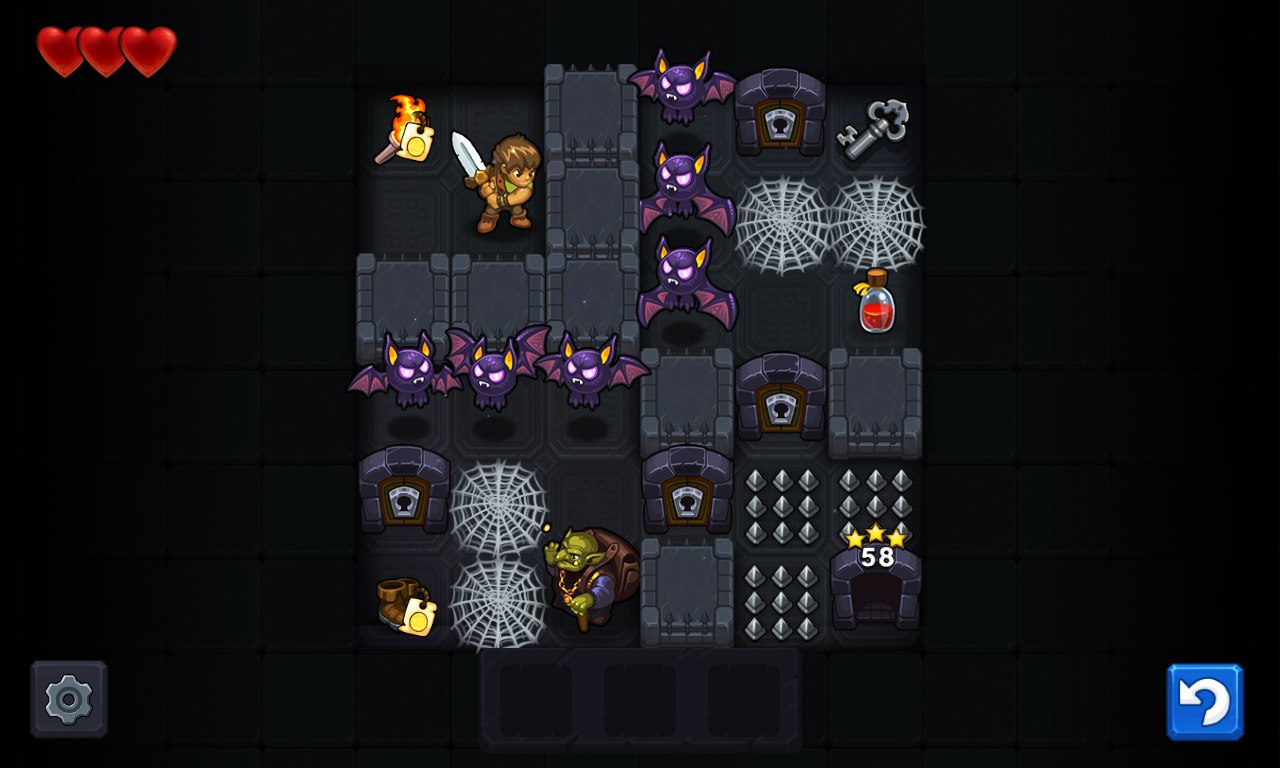
Introduction
The article is about the creation of cognitive connections in the heads of the players of the logical game.
"Maze Lord". Or, as various sites translated it - Lord of the Underground. This is a turn-based puzzle game with elements of resource management in a roguelike setting.
Plot
A certain dragon, following the recommendations of his acquaintances, decided to visit the neighboring kingdom, see the sights, destroy all kinds of buildings and kidnap some princess. But who would have thought that some kind of hero suddenly decides to save her, having ruined and destroyed at the same time practically the entire underground kingdom of our glorious fire-breathing friend. Then build labyrinths, set traps and get monsters to work after that.

')
How did the idea
The way of creating the game was thorny. Technically, it all started when I was still in school. At home, I stumbled upon a children's puzzle in a newspaper. As a rule, this is either a simple crossword puzzle with pictures or “help the rabbit go through the maze and get to the carrot” (although the fact that rabbits are fan of carrots is a delusion).
But that day it was a very unusual puzzle. On the whole page there was a nicely drawn dungeon with NPC and various items. For example, to pass the guard - he had to pay a bag of gold, which is protected by a snake. And stuff like that. Now I would call it a quest with items like Dizzy, but then I did not know. Such a riddle was knocked out of the usual children's puzzles, so I immediately remembered it. But then someone threw out the newspaper and I have never seen such puzzles in any other newspaper.
Only when my friends and I were playing dandy in Fantastic Adventures of Dizzy did I meet a similar mechanic. Needless to say - the game was a masterpiece: an open world, a variety of interactive items, equipment, good music and the entourage of the good old fairy tale.
I remember we went through the game with the whole company: one managed Dizzy himself, the second kept a magazine with a list of items and their purpose, while the others argued how best to create a Dizzy route so that all items should be used where they should be, which ones should be left for later on. Now it would be called a cooperative, but then we did not know.
Prototype
Several years have passed. I learned how to program games. And suddenly he remembered that childish puzzle from the newspaper and about Disi into a dandy and decided to try to convey the basics of the gameplay.
The very first version of the prototype was called BoardTiles and was made in Flash.
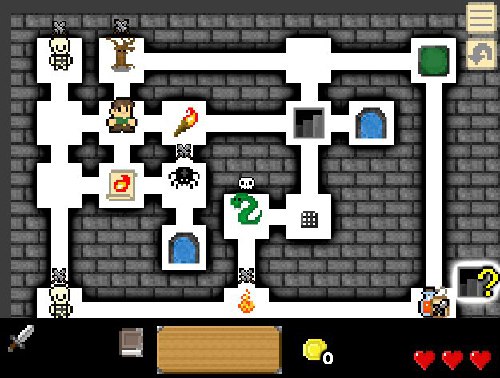
As a result, I switched to Unity, reduced the level to a field of 6x6 cells, simplified the purchase / sale of items and added new objects.
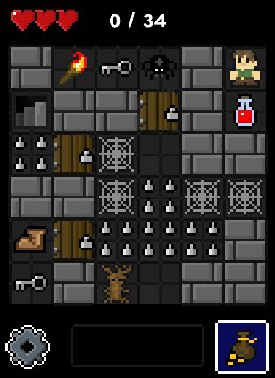
Conversion
The game can be called a resource converter. The player has a list of resources, while various converters are tricky placed on the level - they transfer some resources to others.
Having 3 hearts in the beginning, the player needs to get to the exit from the level, while visiting the converters in the correct sequence.
What resources do we have, you ask? But what resources we have, I will answer:
- health in the form of hearts
- gold in the form of gold coins
- armor armor
- inventory items
- empty slots in the inventory (yes, yes, this is also a resource)
- empty cells at the level (and this too)
At the same level, in turn, are placed the converters of these same resources, for example:
- Monster: cardio -> cell level
- door: key -> level cage
- Buyer: Item -> Gold Coin
Graphic style search
The main idea in the graphics was the good readability of all objects. This applied to both the shape of the objects and the color. So that from the first glance of the player it was immediately clear what kind of object it is.
And the player should have seen the whole level clearly (this is how the pun turned out: the game is well suited for mobile devices).
And it would seem, I do not ask much. But, unfortunately, the search for the desired art was long and difficult.
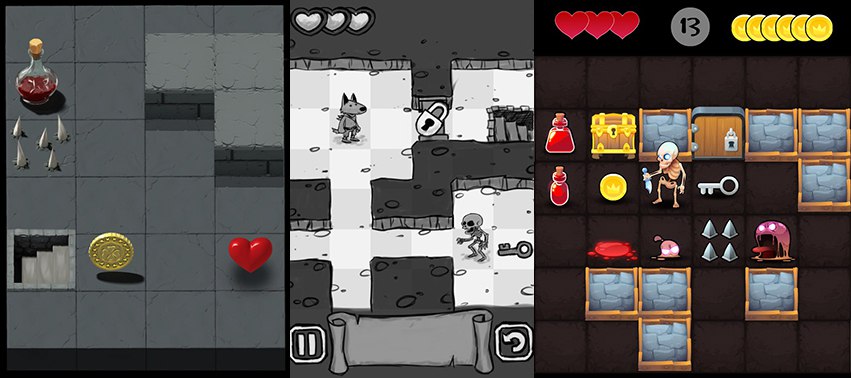
As a result, they came to this
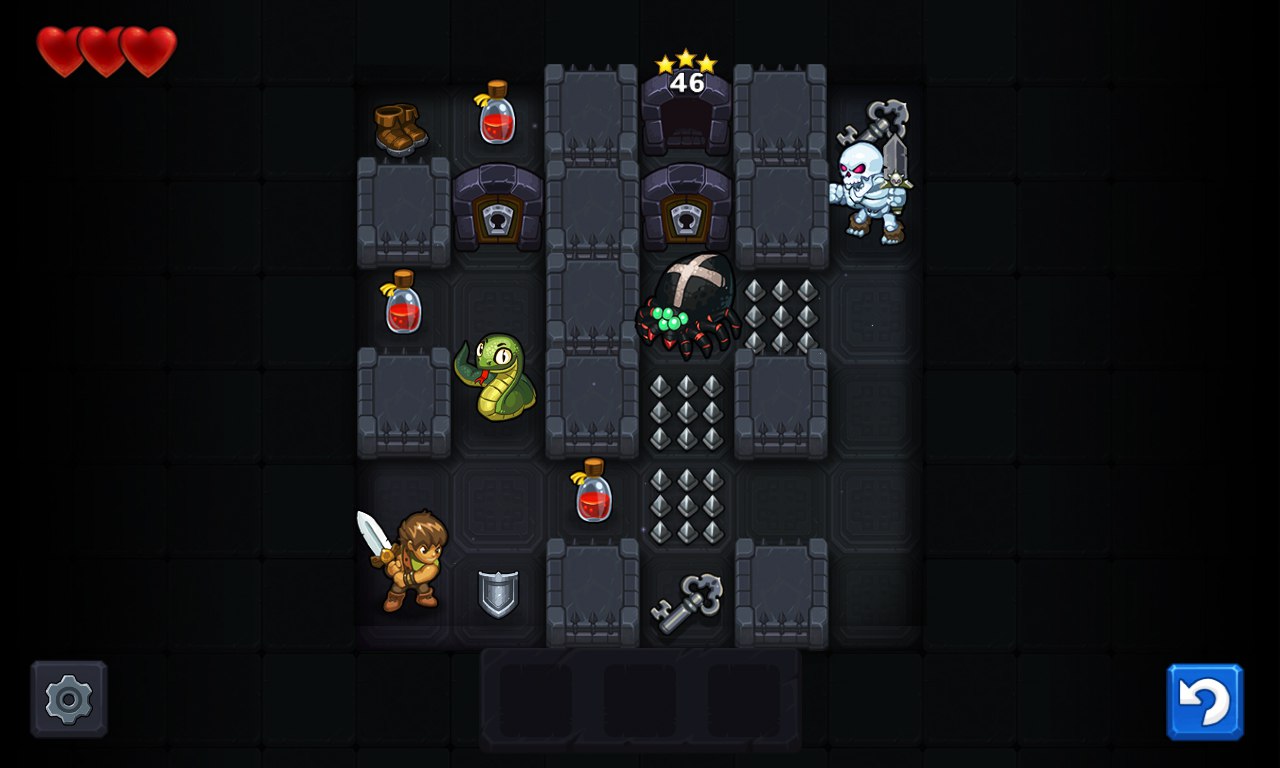
Options they are everywhere
Strangely enough, the most difficult moment of development was to invent various objects for levels. Although it would seem that there is something complicated: the monster takes the heart, the key - opens the door. And the objects are pretty standard. But the complexity, as always, lies in the details. In this case, the difficulty was the compilation of objects with a large variety of applications, as well as with simple and understandable combinations with other objects. After all, a large selection of many options and makes a logical game interesting.

Therefore, all objects must meet several requirements:
- good readability (shape and color)
- application variability (not applicable to monsters)
- clear interactions with other objects
- to look logical in the setting of dungeons, thereby complementing the main game lore
It is for variability that all objects are used in several ways, namely:
- the key opens both the door and the chest
- the torch can burn both wood and cobwebs
- any item can be sold for one coin (except for the Cursed Stone, which is quite logical)
- The shield can be substituted either for a normal blow or for a snake bite, which will prevent the player from poisoning.
- for gold, you can either buy an item with a price tag, or go through a greedy troll by paying for the pass.
Incomplete interaction scheme of most objects
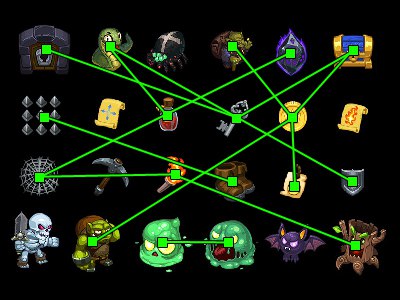
Also in the game you can find some interesting interactions, such as:
- the web takes the first item in the inventory
- damn stone can not be thrown off and sold, that is, it just takes 1/3 of the inventory, but it can take the web
- The item with a price tag can be bought for a coin, which can either be found at the level, either taken from the chest, or you can sell something from the seller
- scroll of fire can burn any annoying monster
- A scroll of repulsion can push any annoying monster away from your comfort zone.
Meet new subjects
Periodically, the game introduces the player with new items. At this moment, along with the textual description of the new object, we throw the player into a small training level, which is done only to show how the new object works. And more on such levels there is nothing. For example, to get acquainted with the "potion of health" at the level there is a monster who takes away the heart and the potion itself. And this is not done by chance.
Publisher said that these are too simple levels, but I explained that in these levels there is nothing superfluous - only the action of the object. It is at these moments that we begin to create a cognitive connection in the player’s head with a new object. The text description is nice, but to see, and most importantly, to test the subject is much more obvious.
Cognitive communication
The meta-task was precisely in creating certain cognitive connections (as I call it), so that the player in the middle of the game, remembering all the objects and how they interact, could solve the puzzles "on the machine", almost without thinking, but just casually throwing a cursory glance at level.
For this purpose, intuitive well-readable objects and a completely open level were invented, so that we could immediately draw up a plan of action for our hero.
The interaction scheme that is closer to the truth
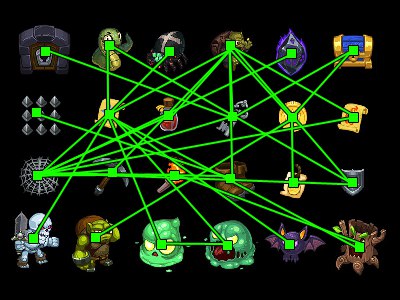
Did you achieve this? This question is better to ask the players who complained about the allegedly simple levels in the second half of the game, although they all ranged from simple to complex (sawtooth ladder). Moreover, empirical levels were set - the more times the tester lost at the level, the farther this level was located in the game.
Thus, the rapid passage of complex levels is possible and is a manifestation of the created cognitive connections among players. Well, or at the end of the game there really were simple levels ...
Words of gratitude!
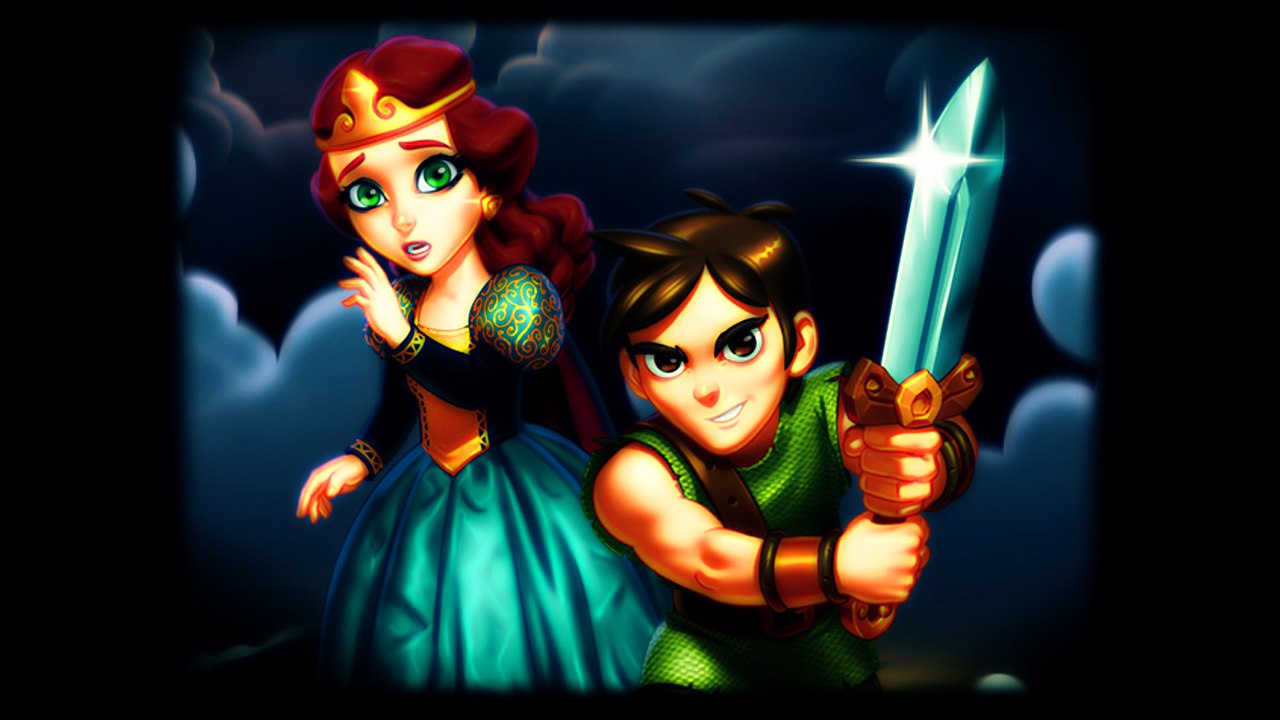
Source: https://habr.com/ru/post/347678/
All Articles